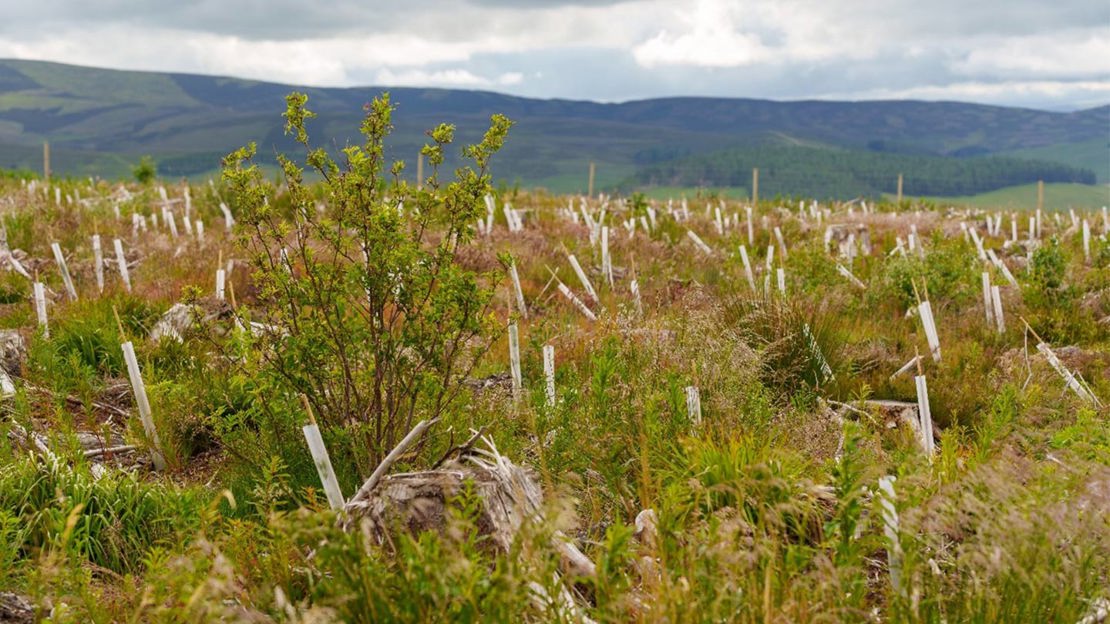Root of the problem: underfunding, underdelivering

Policy Advocate - Scotland
This year’s woodland creation figures for Scotland are deeply disappointing. The numbers reflect not just a missed target, but another missed opportunity.
Trees and woods are the backbone of a healthy, resilient landscape. They clean our air and water, lock up carbon, manage flood risks and host a myriad of species. Woods connect people to nature, support wellbeing and offer sustainable economic opportunities, from timber to tourism. In the face of climate impacts and biodiversity collapse they’ve never been more vital.
Woodland Trust Scotland and Confor warned months ago that cuts to forestry budgets and prolonged uncertainty would stall woodland creation, which is exactly what has happened. The Scottish Government oversaw only 8,470 hectares of new woodland – falling short of its 18,000–hectare target for 2024–25, missing its reduced 10,000–hectare goal and ending with a figure significantly lower than the previous year’s delivery of 15,000 hectares. We are now asking: why?
The obvious answer is the 41% cut to the Forestry Grant Scheme (FGS) budget in 2024–25. But that’s only part of the story. Tree planting requires long-term planning, involving nurseries, contractors and yearly preparation. Switching funding on and off year to year doesn’t work. Without steady, multi-year funding, woodland creation becomes a high-risk investment for land managers. So, multi-year funding commitments would help, as would a more wholehearted commitment to woodland creation at the very top of the Scottish Government. Another issue is slippage – why so many approved schemes don’t go ahead. Multiple factors are at play and it’s important that they are understood to keep this to a minimum.
The FGS itself is constantly being improved and the next election is a chance to make some bold changes. Encouragingly, this year saw a 50:50 split between commercial and native woodland creation, but funding needs to reflect that balance. Ringfencing some of the future FGS budgets for native broadleaf woodland, which delivers more public benefit than it does profit, is an important step. The FGS should also support more woodland creation in places where it’s most lacking – along our rivers, in our montane uplands and in our towns and cities. And at the very least the FGS budget must track with inflation.

Woodland creation isn’t all about planting. Trees regenerate naturally in the right conditions. It’s encouraging to see a small proportion of new woodland creation has been down to natural regeneration, but it’s far too little because of excessive deer numbers and competing land use pressures. With improved deer management incentives and requirements, and better land use planning, we can save money by building fewer fences and giving trees the space to grow themselves. In the meantime, planting remains extremely important and the transition away from that model must not allow for deceleration of woodland creation.
We often hear that landscape-scale restoration is the key to tackling the climate and nature crises. And it is, but it’s not the whole story. Small and medium woodland creation schemes on farms, in communities, and along rivers and roads are also vital.
These schemes often face the highest barriers such as per-hectare costs, complex grant processes and lack of economies of scale. The small-medium-sized gap is often plugged by national charities like the Woodland Trust’s MOREwoods scheme or more localised initiatives like the Borders Tree Grant Scheme.
Future versions of the FGS need to provide better financial support and a simpler process to make smaller and medium-sized schemes more feasible. This kind of reform must also reach the farm gate. The new £1m fund for farmers to plant trees is very welcome, but only as a stopgap.
Last year, we published a paper recommending a suite of proposals for trees on farms and crofts which has been garnering support from the farming and crofting sectors, as well as from eNGOs and policymakers.
This year’s woodland creation figures could be dismissed as a blip but reveal a deeper issue: a deprioritisation of land-based climate and nature solutions at precisely the moment we need to double down.
The UK Climate Change Committee is clear: woodland creation must be frontloaded this decade to realise the benefits by mid-century. That means acting now, not waiting for the next budget cycle or election. Every year of delay increases the shortfall and makes it harder to restore natural processes and build resilience to increasingly extreme weather.
We need political leadership that delivers for native woodland and restoration across towns and cities, farms, uplands and watercourses. We need an FGS that delivers more public good for public money, and an agricultural policy that empowers farmers as stewards of both food and nature.
The woodlands we create this decade, and the way they are created, will define the land we leave to future generations. The time is now to build a Scotland that’s greener, fairer and better prepared for what lies ahead.

